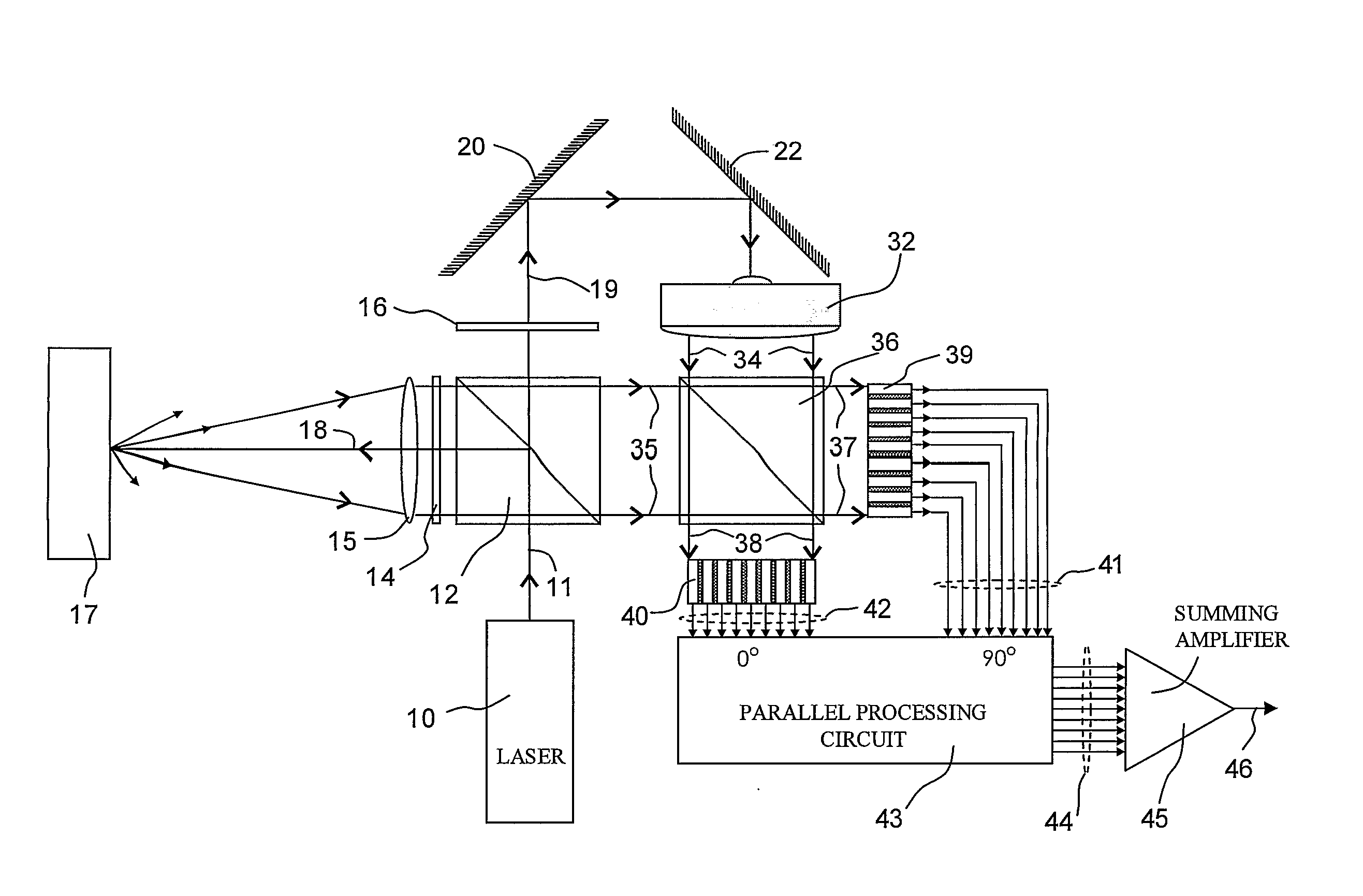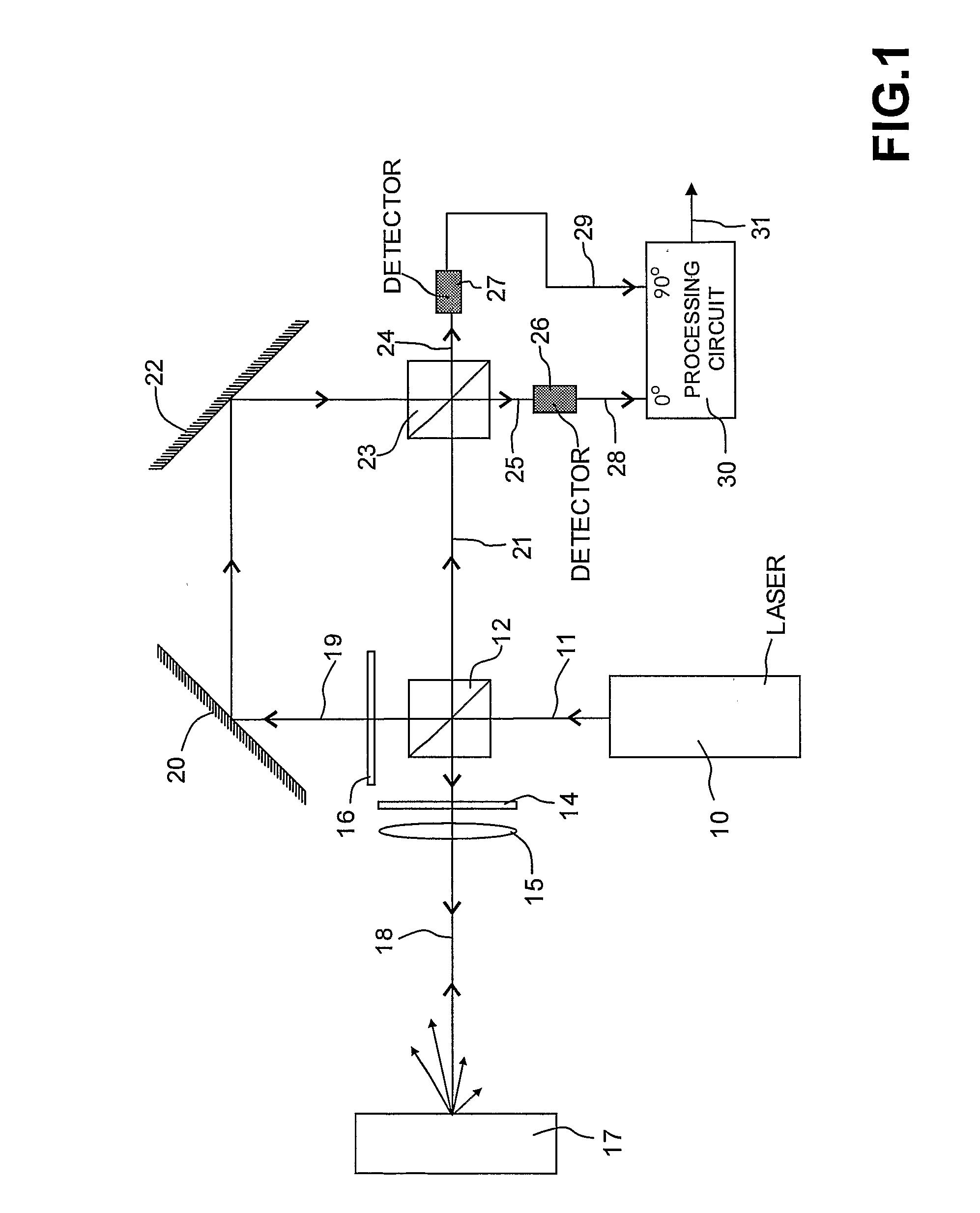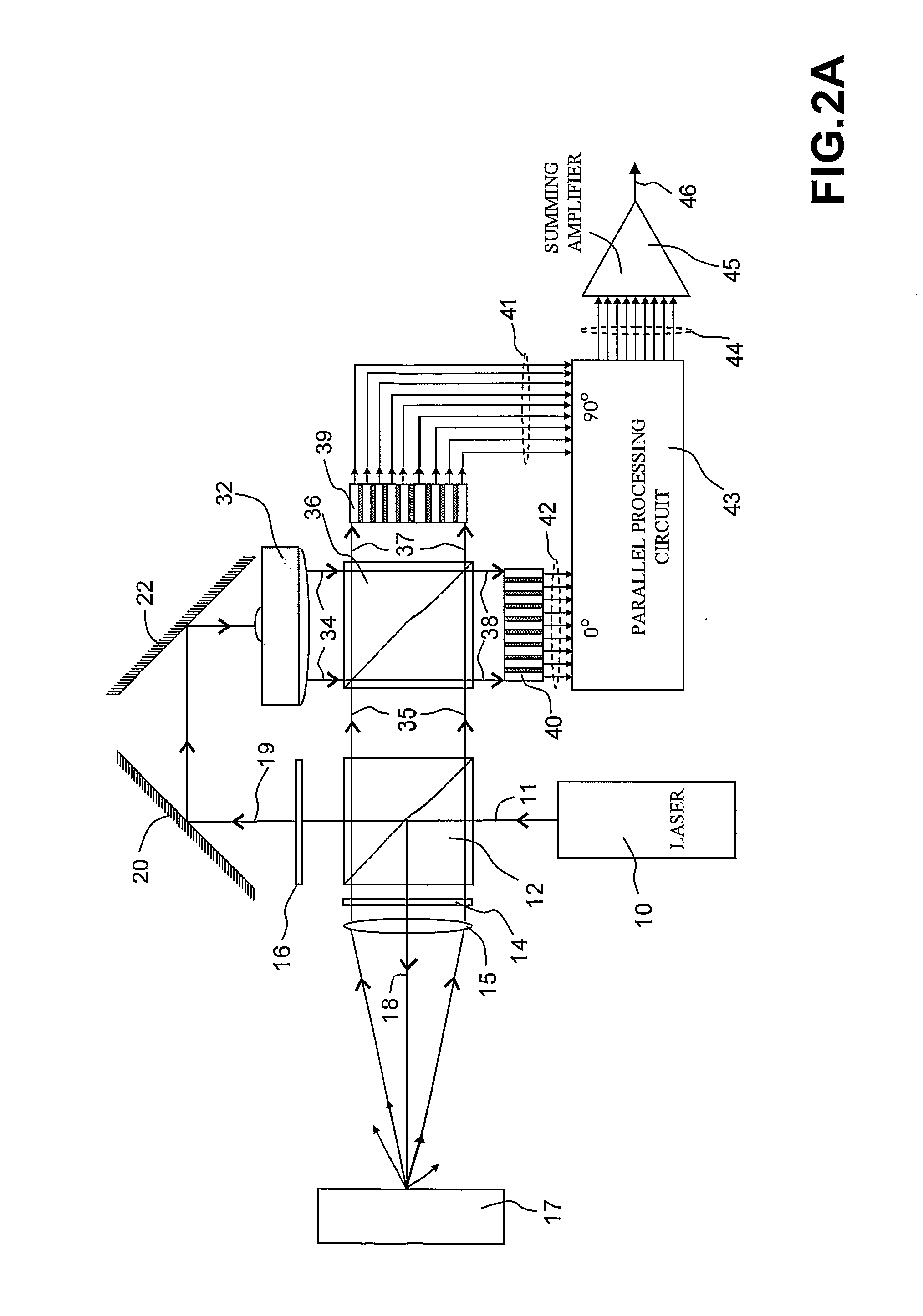Multi-channel laser interferometric method and apparatus for detection of ultrasonic motion from a surface
a laser interferometer and surface technology, applied in response signal detection, instruments, measurement devices, etc., can solve the problems of reducing interference efficiency, sensitivity not directly improved, and very low sensitivity of the interferometer on rough surfaces
- Summary
- Abstract
- Description
- Claims
- Application Information
AI Technical Summary
Problems solved by technology
Method used
Image
Examples
first embodiment
[0058]FIG. 2B illustrates a variant of the first embodiment shown in FIG. 2A which includes a differential detection scheme. The reference beam 19 passes through a half wave plate 48 whereby reference beam is linearly polarized and orthogonal to the object beam polarization 35. In this embodiment, the object beam 35 and the crossed polarized reference beam 47 are first divided by dividing means, as a beam splitter 49, into two optical signals 50 and 51. One of the optical signals, the optical signal 50 in FIG. 2B, passes through a quarter wave plate 52 which has its optical axis oriented along the polarization axis of the optical signal 50, resulting in a 90° phase shift between the two orthogonal polarizations. In this embodiment, the combining means comprise two polarizing beam splitters 53a and 53b and the receiving means comprise four arrays of detectors 56a, 56b, 57a and 57b. The partially transmitted object beam and reference beam 50 and 51 are made to interfere along the two ...
second embodiment
[0059]FIG. 3 illustrates a second embodiment according to the invention, in which the quadrature detection scheme is replaced by an heterodyne detection scheme. Similarly to FIG. 2, the laser beam 11 is split in a probe beam 18 and a reference beam 67. A frequency shifting device 68, such as a Bragg cell, is driven by a single frequency oscillator 66 producing a frequency shift at fB of the reference beam 67. After frequency shifting, the reference beam is expanded by the beam expander 32 such as to fully fill the active area of the array of detector 71. The linearly polarized object beam 35 and the linearly polarized frequency shifted reference beam 67 are mixed by the beam splitter 69 and the heterodyne optical fringe signal 70 is detected by the array of detector 71. The heterodyne signals 72 are processed by a parallel processing circuitry 75. The multiple processed signals 76 are then summed by a summing amplifier 45 in order to give an average output signal 78 proportional to ...
third embodiment
[0061]FIG. 4B illustrates a first variant of the third embodiment shown FIG. 4A which includes two arrays of detectors 82 and 88, making use of all the light available. Similarly to FIG. 4B, The linearly polarized object beam 35 and the linearly polarized reference beam 79 are mixed by the beam splitter 80. The optical fringe signals 81 and 87 are detected by the array of detectors 82 and 88. The signals 83 and 89 are processed by a parallel processing circuitry 90. In this embodiment the number of signals is doubled compared to the previous embodiment shown FIG. 4A. Similarly to the previous embodiment shown FIG. 4A, the parallel processing circuitry 90 process each signal independently and it can be based on either the square demodulation, as explained below in reference to FIG. 9A, or the rectification demodulation, as explained below in reference to FIG. 9B. Because each signal are processed independently, there is no accuracy requirement regarding the relative positioning of th...
PUM
| Property | Measurement | Unit |
|---|---|---|
| displacement | aaaaa | aaaaa |
| optical | aaaaa | aaaaa |
| phase shift | aaaaa | aaaaa |
Abstract
Description
Claims
Application Information
 Login to View More
Login to View More - R&D
- Intellectual Property
- Life Sciences
- Materials
- Tech Scout
- Unparalleled Data Quality
- Higher Quality Content
- 60% Fewer Hallucinations
Browse by: Latest US Patents, China's latest patents, Technical Efficacy Thesaurus, Application Domain, Technology Topic, Popular Technical Reports.
© 2025 PatSnap. All rights reserved.Legal|Privacy policy|Modern Slavery Act Transparency Statement|Sitemap|About US| Contact US: help@patsnap.com



